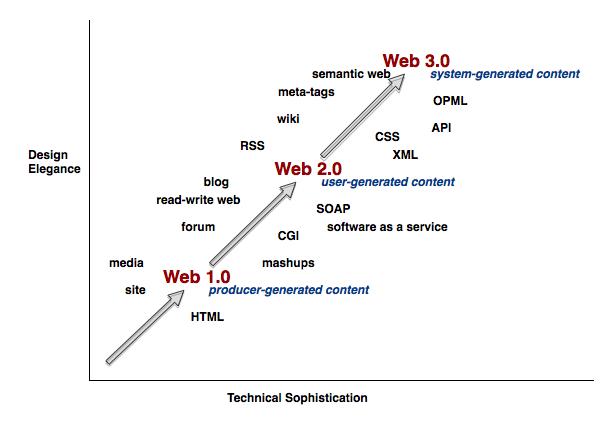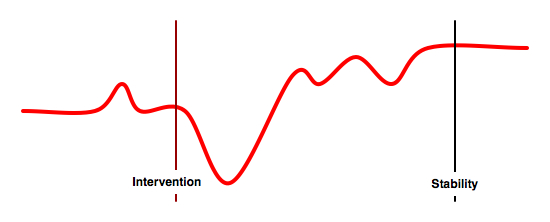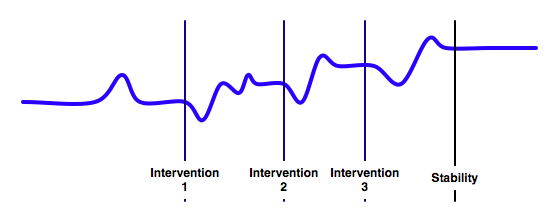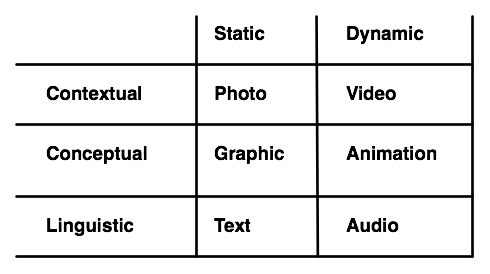In my Broken ID series, I talked about the mistakes people made and how the elements of elearning should be redesigned. I didn’t talk about how you’d revamp your design processes to achieve the results. And I should, because it’s easy to ‘get’ the concepts, harder to turn around and revise your organizational design processes so that they systematically are providing improved design. I’ve been involved in improving organizational design processes in several different instances, and it took several different steps to lead to persistent change.
Naturally, it starts with a good vision; you’ve got to have a sound basis for good design on tap. The Broken ID series is a good start (and there others), but it takes more than that.
The next step naturally is working through the implications for the design process, mapping out the principles and how they play out in practice makes the design guidance concrete. It helps if everyone’s on the same page, and a shared understanding has been negotiated, so developing this as a team is valuable. Having this facilitated by someone who can help interpret the principles through concrete examples and then applying it to inhouse work product is ideal, but even internal workshopping would likely provide some improvement.
Of course, this works better if the frameworks and design tools are aligned with this new vision. That is, any design templates need to be reviewed and updated, or design support needs to be created. The point is to provide scaffolding because old approaches are hard to shift. Think of it as performance support for design.
When I’ve been part of making this work in the past, a real benefit has come from having the first outputs from the design process be reviewed. External review has advantages, but even peer review (those who have not been part of the generating design team) can be advantageous. Document the mistakes made (anonymously may be desirable), or at least the remedies, and share them, so others learn from the process.
Finally, putting in place processes around the design process, e.g. ensuring that the solutions are designed to meet strategic initiatives, is a level of extra care to help ensure that the learning solution is of benefit. Not just ROI, but aligned to the business.
It’s surprisingly hard to make design changes persistent, and it’s been my experience that token efforts don’t lead to lasting results. It takes a systematic effort so that it’s hard to go back, as opposed to being hard to continue. That’s when you’ll find the change sticking.
There’s clearly still a deep need for better learning design, and the solution, while not trivial, is also not rocket science. There is a straightforward set of steps that will yield better designs, by design, and it’s reasonable in resources and time. Let’s practice what we preach, and design our design processes to be optimal, not just expedient. So, no more excuses for bad design, please!
 However, if we think about web 2.0 as user-generated content, we can think about 1.0 as producer-generated content. The original web was what people savvy enough (whether tech or biz) could get up on the web. The new web is where it’s easy for anyone to get content up, through blogs, photo-, video-, and slide-sharing sites, and more.
However, if we think about web 2.0 as user-generated content, we can think about 1.0 as producer-generated content. The original web was what people savvy enough (whether tech or biz) could get up on the web. The new web is where it’s easy for anyone to get content up, through blogs, photo-, video-, and slide-sharing sites, and more.
 By having smaller introductions that break up the intervention, you decrease the negative effects. The point is to take small steps that make improvements instead of a monolithic change.
By having smaller introductions that break up the intervention, you decrease the negative effects. The point is to take small steps that make improvements instead of a monolithic change. The goal is to maximize improvements while minimizing disruption, and doing so in ways that capitalize on previous efforts and existing infrastructure. To do this really requires understanding how the different components relate: how content models support mobile, how performance support articulates with formal learning and social media, and more. And, of course, understanding the nuances of the underpinning elements and how they are optimized.
The goal is to maximize improvements while minimizing disruption, and doing so in ways that capitalize on previous efforts and existing infrastructure. To do this really requires understanding how the different components relate: how content models support mobile, how performance support articulates with formal learning and social media, and more. And, of course, understanding the nuances of the underpinning elements and how they are optimized. I’ve had a slight blindspot for photos and video because I peg the ‘conceptual’ meter. I recognize the value, though I don’t play with the files enough (tho’ I took a digital audio/video editing course more than a decade ago, and recently edited home videos for my wife’s birthday). Photos and videos are really good for contextualizing, and that’s particularly valuable for examples (and practice).
I’ve had a slight blindspot for photos and video because I peg the ‘conceptual’ meter. I recognize the value, though I don’t play with the files enough (tho’ I took a digital audio/video editing course more than a decade ago, and recently edited home videos for my wife’s birthday). Photos and videos are really good for contextualizing, and that’s particularly valuable for examples (and practice).